If you’re on the hunt for a houseplant that’s both beautiful and incredibly easy to care for, the Spider Plant (Chlorophytum comosum) is a perfect choice. With its arching green and white-striped leaves and adorable dangling plantlets (baby spider plants), it’s not just charming but also one of the most beginner-friendly indoor plants you can grow.
Spider plants are known for their adaptability, resilience, and air-purifying qualities, making them a must-have for both plant novices and seasoned indoor gardeners. In this comprehensive guide, we’ll explore how to care for a spider plant properly — covering everything from light and water needs to propagation and troubleshooting common issues.
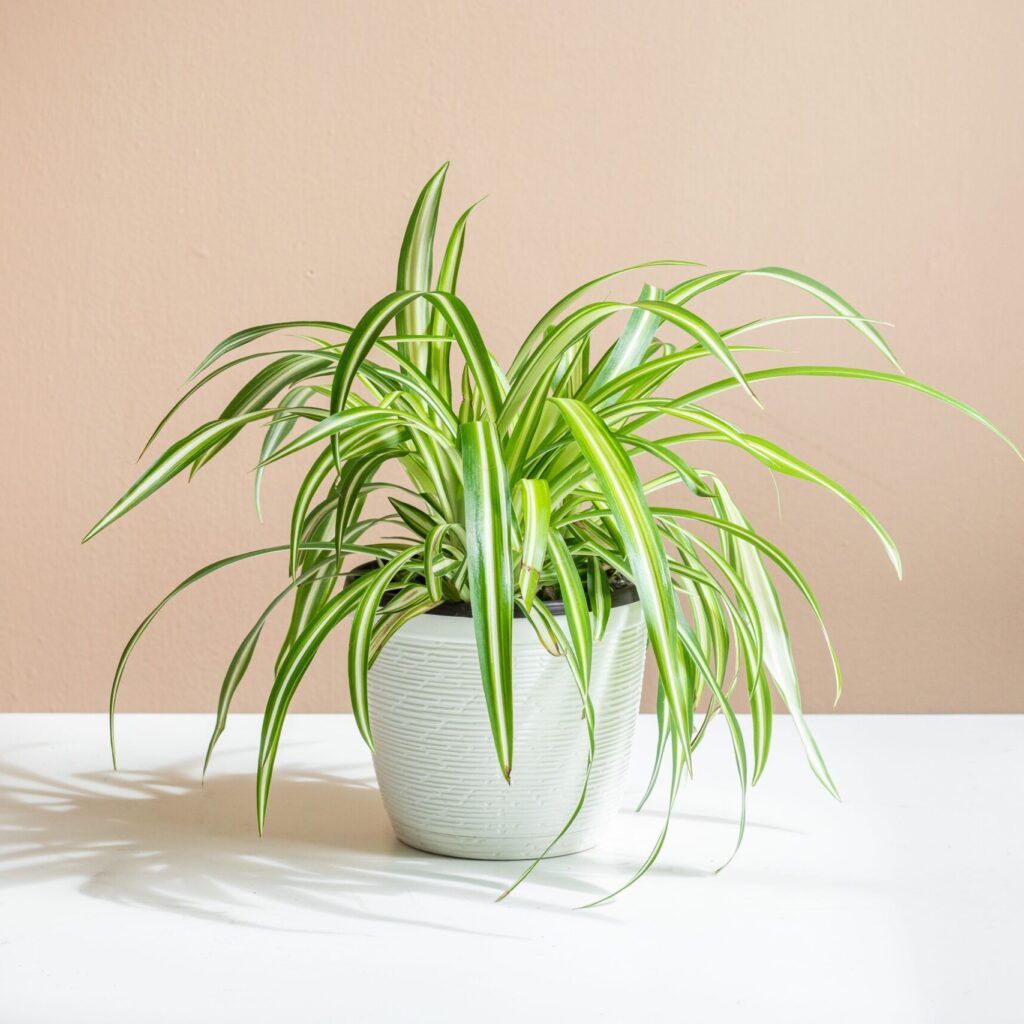
Why Choose a Spider Plant for Your Home?
The Spider Plant is a classic houseplant beloved for several reasons:
- Low-maintenance: Requires minimal attention.
- Air-purifying: NASA’s Clean Air Study listed it as one of the best indoor air-cleaning plants.
- Fast-growing: Produces lush foliage and baby spider plants quickly.
- Non-toxic to pets: Safe for cats and dogs (though too much nibbling may cause mild digestive upset).
- Versatile: Thrives in hanging baskets, tabletop pots, or shelves.
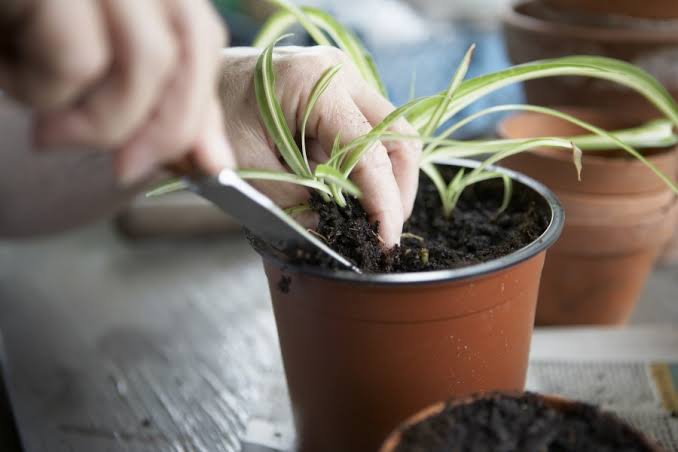
Ideal Growing Conditions for a Spider Plant
Native to the tropical and subtropical regions of Africa, Spider Plants are happiest in conditions that mimic their natural habitat. Here’s how to recreate those indoors:
1. Light Requirements
Spider Plants prefer bright, indirect light but are highly tolerant of a range of lighting conditions.
- Ideal location: Near an east or north-facing window where they get filtered sunlight.
- Avoid harsh, direct afternoon sun as it can scorch the leaves.
- Can adapt to low light but may lose their vibrant striping and grow more slowly.
Tip: If your Spider Plant’s leaves start turning pale or crispy at the edges, it might be getting too much sun.
2. Temperature and Humidity
Spider Plants prefer moderate, stable conditions.
- Ideal temperature: 65°F to 80°F (18°C to 27°C).
- Protect from temperatures below 50°F (10°C) as cold drafts can damage the foliage.
- Humidity: Prefers average to high humidity. If your home is dry, especially in winter, increase humidity by:
- Misting the plant occasionally.
- Using a humidifier.
- Grouping it with other plants to create a microclimate.
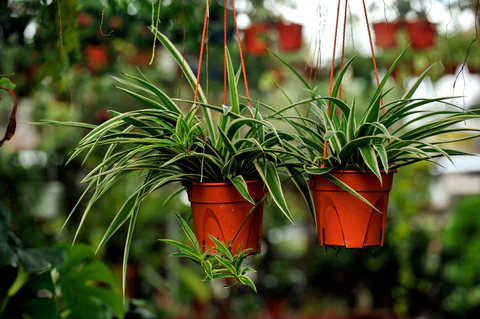
Watering a Spider Plant Correctly
Watering is crucial for the health of your Spider Plant, as it’s sensitive to both overwatering and underwatering.
How Often to Water
- Water when the top 1-2 inches of soil feels dry.
- Typically, water once a week during the growing season (spring and summer) and every 10-14 days in winter.
Tip: Spider Plants are more tolerant of slight underwatering than overwatering. Their thick, tuberous roots store water, giving them a bit of drought resistance.
Best Watering Practices
- Use room-temperature, filtered, or distilled water to avoid brown leaf tips caused by fluoride and chlorine in tap water.
- Water thoroughly until it drains from the bottom.
- Never let the plant sit in standing water — empty the saucer after watering.
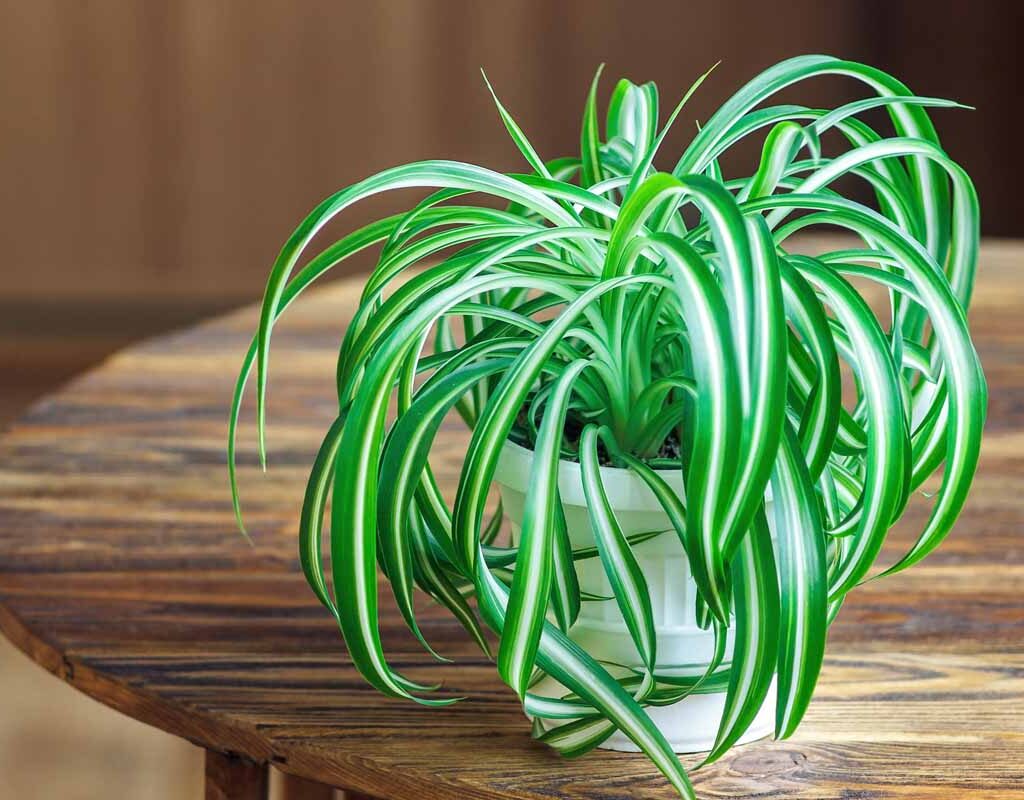
The Right Soil for a Spider Plant
Spider Plants thrive in a well-draining, light, and airy soil mix.
Recommended Soil Mix:
- 2 parts general-purpose indoor potting soil.
- 1 part perlite or coarse sand for improved drainage.
- Optional: 1 part peat moss or coco coir for moisture retention.
Avoid heavy soils that hold too much water, as they increase the risk of root rot.
Fertilizing a Spider Plant Naturally
While not heavy feeders, Spider Plants appreciate an occasional nutritional boost.
Feeding Schedule:
- Fertilize once a month during spring and summer.
- Avoid fertilizing in fall and winter when the plant’s growth naturally slows.
Natural Fertilizer Options:
- Compost tea: A gentle organic option.
- Liquid seaweed or fish emulsion: Encourages lush, green growth.
- Banana peel water: Provides a natural source of potassium.
Tip: Over-fertilizing can cause brown leaf tips and build-up of salts in the soil.
Pruning and Grooming Your Spider Plant
Regular grooming keeps your plant healthy and attractive.
Pruning Tips:
- Trim off brown or yellowing leaf tips and damaged leaves.
- Remove baby spider plants (plantlets) if you prefer a tidier look or want to propagate.
Use clean, sharp scissors or pruning shears to avoid spreading plant diseases.
Cleaning Leaves:
Wipe leaves with a damp, soft cloth occasionally to remove dust and maintain healthy photosynthesis.
Repotting a Spider Plant
Spider Plants grow quickly and may become root-bound, requiring repotting every 1-2 years.
Signs It’s Time to Repot:
- Roots protruding from drainage holes.
- Soil dries out too quickly.
- Plant appears stunted or overcrowded.
How to Repot:
- Choose a pot 1-2 inches larger in diameter.
- Use fresh, well-draining soil mix.
- Gently loosen the roots and remove any dead or mushy sections.
- Water thoroughly after repotting.
Propagating a Spider Plant
One of the most rewarding aspects of owning a Spider Plant is propagating the adorable baby plantlets it produces.
How to Propagate:
- Wait for plantlets to develop small roots.
- Snip them off the main plant.
- Place them in water or moist potting soil.
- Roots typically develop in 7-10 days.
- Transfer to individual pots when roots are at least 1-2 inches long.
Tip: Spider plantlets can also stay attached to the parent plant and root into nearby soil if allowed.
Common Problems and How to Solve Them
Even though Spider Plants are hardy, a few issues can arise. Here’s how to troubleshoot:
| Problem | Possible Cause | Solution |
|---|---|---|
| Brown leaf tips | Fluoride in water, over-fertilizing, low humidity | Switch to distilled water, reduce fertilizing, mist leaves |
| Yellow leaves | Overwatering, poor drainage | Allow soil to dry before watering, ensure proper drainage |
| Limp leaves | Underwatering or root rot | Check soil moisture and adjust watering |
| Slow growth | Low light, depleted soil | Move to brighter spot, fertilize during growing season |
| No plantlets | Insufficient light or nutrients | Increase light exposure, feed regularly during spring and summer |
Air-Purifying Benefits of a Spider Plant
According to NASA’s Clean Air Study, Spider Plants are excellent at removing indoor air pollutants such as:
- Formaldehyde
- Carbon monoxide
- Benzene
Having a Spider Plant indoors not only elevates your décor but also improves your indoor air quality naturally.
Extra Care Tips for a Thriving Spider Plant
- Rotate the plant regularly to encourage even growth.
- Avoid letting the roots stay waterlogged; Spider Plants dislike wet feet.
- Use hanging baskets to showcase their arching leaves and baby plantlets.
- Remove dead foliage promptly to keep the plant tidy and disease-free.
- Don’t be alarmed by occasional plantlet production pauses — it’s normal based on light and season.
Final Thoughts
Caring for a Spider Plant properly is incredibly easy and rewarding. Its forgiving nature, fast growth, and air-purifying abilities make it a perfect choice for both novice and experienced plant lovers. By providing bright, indirect light, moderate watering, well-draining soil, and occasional feeding, you’ll keep your Spider Plant healthy, lush, and thriving for years.
So, whether you’re looking for a leafy roommate for your desk, kitchen shelf, or living room corner, a Spider Plant is a timeless, fuss-free choice that’ll never disappoint.

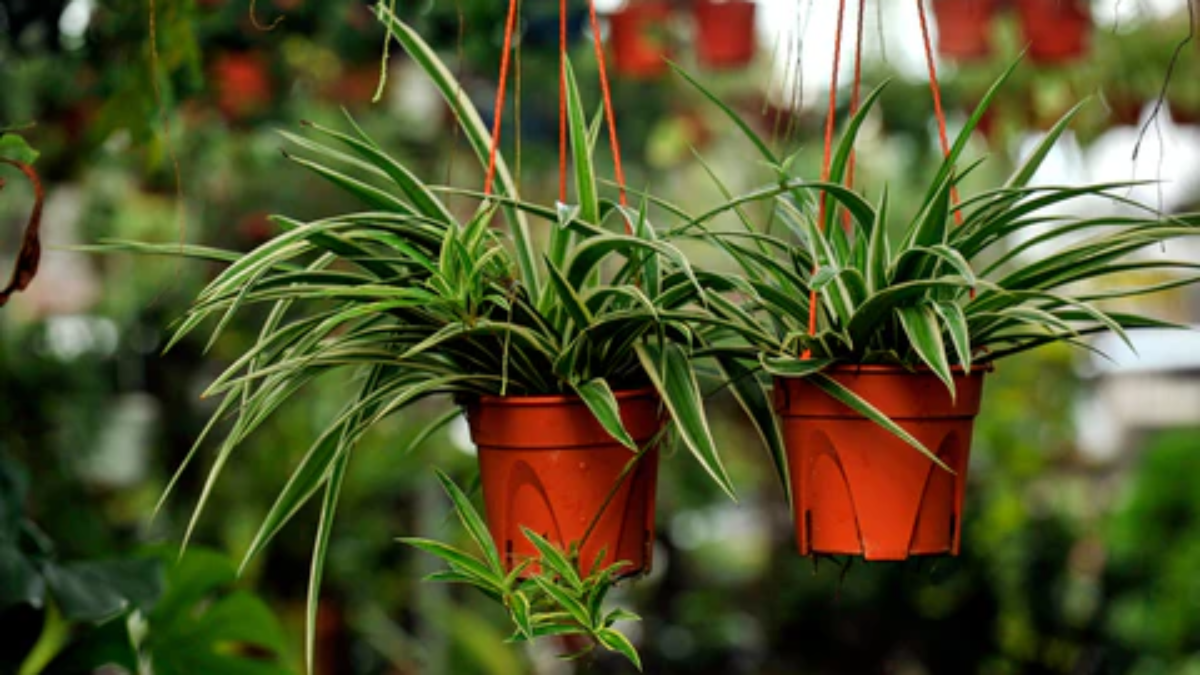




Leave A Comment